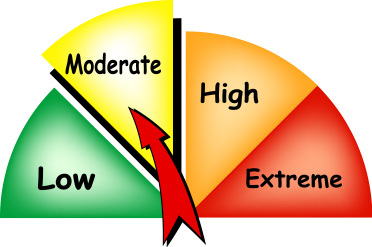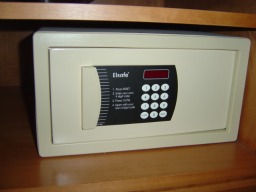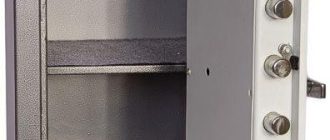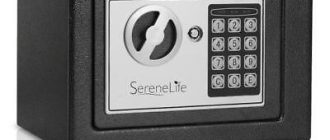
Safe Fire Ratings Importance
Ratings play a crucial role in ensuring the safe functioning of various products. When it comes to fire safety, safe fire ratings are of utmost importance. These ratings indicate the level of protection provided by a particular product against fire hazards. Whether it’s a building material, a piece of furniture, or an electrical appliance, knowing its fire rating is essential to ensure the safety of people and property.
Without proper fire ratings, the risk of devastating fire incidents increases significantly. Evaluating the fire resistance of a product based on its rating allows for informed decision-making, enabling you to choose the safest options for your home or business.
Understanding Safe Fire Ratings
When it comes to protecting your property and loved ones, understanding safe fire ratings is crucial. Fire can cause significant damage within seconds, so it’s essential to be aware of the level of protection a product or material can provide in the event of a fire.
Safe fire ratings are a standardized measure of the ability of a product to withstand fire. These ratings are based on rigorous testing and assessment conducted by recognized fire safety organizations.
There are different fire rating classifications, and each represents a particular level of fire resistance. The most common ratings include:
- Class A Fire Rating: Products with this rating provide the highest level of fire resistance. They are highly effective in preventing the spread of flames and have excellent resistance to heat.
- Class B Fire Rating: Products with this rating offer moderate fire resistance. They are capable of slowing down the spread of flames and are suitable for certain applications.
- Class C Fire Rating: Products with this rating have limited fire resistance. They provide minimal protection against flames and are not recommended for high-risk areas.
It’s important to note that fire ratings can vary depending on the type of material or product being evaluated. For example, fire-resistant paint may have a different rating compared to fire-resistant doors.
Understanding safe fire ratings can help you make informed decisions when selecting materials or products for your property. Ensure you choose products with appropriate fire ratings that align with the level of protection you require.
Remember, investing in products with safe fire ratings is an investment in the safety and well-being of your property and everyone in it.
Ensuring Fire Safety Compliance
In addition to understanding the importance of safe fire ratings, it is crucial to ensure fire safety compliance in all aspects of your property. This means taking proactive measures to prevent fires and minimize the impact in case a fire breaks out.
One way to ensure fire safety compliance is by regularly inspecting and maintaining fire safety equipment, such as fire extinguishers, fire alarms, and sprinkler systems. These devices should be in proper working condition and meet the necessary safety standards. Regular testing and maintenance should be conducted to ensure their effectiveness.
Furthermore, it is essential to create a clear and comprehensive fire safety plan. This plan should outline evacuation routes, designated meeting points, and emergency contact information. Regular fire drills should be conducted to familiarize everyone with the plan and ensure a swift and organized response in the event of a fire.
Training and education are also crucial in ensuring fire safety compliance. All employees and residents should receive proper training on fire prevention, evacuation procedures, and the use of fire safety equipment. This knowledge can make a significant difference in minimizing injuries and damage in case of a fire.
Lastly, staying up to date with fire safety regulations and codes is essential. Compliance with these regulations helps ensure that your property meets the necessary fire safety standards and reduces the risk of fire-related incidents. It is advisable to consult with fire safety professionals or authorities to ensure that your property is in full compliance.
By following these measures and maintaining a strong commitment to fire safety compliance, you can create a safe environment for everyone on your property while minimizing the potential damages that fires may cause.
The Role of Fire Ratings in Building Codes
Fire ratings play a crucial role in building codes and regulations. These ratings provide a standardized measure of a material’s resistance to fire and its ability to prevent the spread of flames in case of a fire event. Understanding and adhering to these ratings are important for ensuring the safety of occupants and the overall integrity of a building.
Fire ratings are determined through rigorous testing procedures that evaluate the performance of materials when exposed to fire conditions. The results of these tests are then used to assign a rating, which is typically expressed in terms of time in minutes or hours. The longer a material can withstand the effects of fire without collapsing or spreading flames, the higher its fire rating.
Building codes incorporate fire ratings to regulate the use of materials in different areas of a structure. For example, materials with higher fire ratings might be required in high-risk areas such as stairwells and fire exits, while materials with lower ratings might be suitable for less critical areas. This ensures that buildings are constructed with the appropriate level of fire protection based on their function and occupancy.
Fire ratings not only impact the structural elements of a building but also the contents and finishes. By specifying materials with appropriate fire ratings, building owners can mitigate the risk of fire spreading and minimize potential damage to property and assets. It also provides additional time for safe evacuation and allows emergency responders more time to control the fire.
Furthermore, fire ratings help architects, engineers, and designers make informed decisions about the materials they choose for construction and renovation projects. By considering fire ratings, they can select materials that not only meet aesthetic and functional requirements but also comply with safety regulations and standards.
In summary, fire ratings are of utmost importance in building codes as they ensure the safety and well-being of occupants, protect property and assets, and assist professionals in making informed material choices. Adhering to and understanding fire ratings is essential in creating and maintaining structures that are resistant to fire and provide the highest levels of protection possible.
Assessing Fire Hazards and Risks
When it comes to fire safety, it is of utmost importance to assess fire hazards and risks accurately. The ratings associated with fire safety products play a crucial role in ensuring the safety of your premises.
Importance of Assessing Fire Hazards
Assessing fire hazards is vital to identify potential fire risks and take appropriate preventive measures. By evaluating the sources of ignition, combustible materials, and potential fire spread, you can minimize the risk of fire incidents and protect lives and assets.
Ratings for Fire Safety Products
Fire safety products come with fire ratings that indicate their ability to withstand fire for a certain period. These ratings help you choose the right products and ensure that they meet your specific fire safety needs. Proper assessment of fire hazards enables you to select products with the appropriate fire ratings that align with your safety requirements.
Evaluating Fire Safety Measures
Regular evaluation of fire safety measures is crucial to ensure that they remain effective over time. By reassessing fire hazards periodically, you can identify any new risks or changes in the premises that may impact fire safety. Adequate evaluation helps you update your fire safety measures and maintain a high level of protection against fire hazards.
Consulting Fire Safety Professionals
If you are unsure about how to assess fire hazards and evaluate fire safety measures, it is recommended to consult fire safety professionals. They have the expertise and knowledge to conduct thorough assessments, provide proper guidance, and help you implement appropriate fire safety measures.
In conclusion, assessing fire hazards and risks is essential for effective fire safety. By understanding the importance of fire ratings and properly evaluating fire safety measures, you can maintain a secure environment and minimize the potential damage caused by fire incidents.
The Impact of Fire Ratings on Insurance Rates
When it comes to protecting your property and ensuring the safety of your loved ones, fire safety is of utmost importance. One crucial factor to consider when evaluating the safety of a building is the fire rating. Fire ratings are an essential part of determining the level of protection a structure can provide in the event of a fire.
However, fire ratings are not only significant for the safety of the occupants but also can significantly impact insurance rates. Insurance companies take into account the fire rating of a building when calculating premiums. Buildings with higher fire ratings are deemed less risky and are rewarded with lower insurance rates. On the other hand, buildings with lower fire ratings are seen as more vulnerable to fire damage, resulting in higher insurance costs.
Having a safe fire rating can help you save money on insurance premiums while providing you with peace of mind. Insurance providers view buildings with high fire ratings as less likely to sustain extensive damage in case of a fire. This leads to a reduced risk for insurance companies, allowing them to offer lower rates to policyholders.
Investing in fire safety measures and ensuring that your building meets the required fire rating standards is not only crucial for the protection of your property but also for your financial well-being. By maintaining a safe fire rating, you may be eligible for discounts on insurance premiums, which can lead to significant long-term savings.
So, ensure the safety of your property, protect your loved ones, and save money on insurance rates by making fire safety a priority. Choose fire-rated materials and systems for construction and maintenance to maintain a safe fire rating and enjoy the benefits it brings.
Importance of Fire Ratings for Commercial Buildings
Fire ratings play a vital role in ensuring the safety of commercial buildings. These ratings determine the ability of a structure to withstand fire and the spread of flames, smoke, and heat. It is imperative for commercial buildings to have safe fire ratings to protect occupants, property, and to meet regulatory requirements.
One of the primary reasons for the importance of fire ratings is the protection of human life. Commercial buildings are often crowded with employees, customers, and visitors. In the event of a fire, the ability of the building to contain the flames and provide a safe evacuation route is crucial. Fire ratings help determine how long a building can withstand heat, smoke, and fire, giving occupants enough time to safely exit the premises.
Fire ratings also safeguard property and assets within commercial buildings. Without proper fire ratings, a fire can quickly spread, leading to extensive damage and potential loss of important documents, equipment, and inventory. Adequate fire ratings help contain the fire and minimize the spread, limiting the potential for destruction and reducing financial losses.
Furthermore, fire ratings are essential for meeting regulatory requirements. Many jurisdictions and building codes have strict regulations regarding fire safety in commercial buildings. Failure to meet these requirements can result in penalties, fines, or even closure of the establishment. Adhering to fire ratings ensures compliance with these regulations and demonstrates a commitment to providing a safe environment for employees and customers.
In conclusion, the importance of fire ratings for commercial buildings cannot be overstated. They ensure the safety of occupants, protect property and assets, and guarantee compliance with regulatory standards. By investing in safe fire ratings, businesses can create a secure environment and mitigate risks associated with fires.
Fire Ratings and Residential Safety
Fire ratings play a crucial role in ensuring the safety of residential buildings. It is of utmost importance to have safe fire ratings to protect the lives of individuals and safeguard their properties.
When it comes to residential safety, having a proper understanding of fire ratings is essential. Fire ratings determine how long a material or structure can withstand fire exposure while maintaining its integrity. These ratings are based on various factors such as the type of material, its thickness, and fire resistance properties.
In residential buildings, fire ratings are particularly significant as they establish the level of protection that occupants can rely on in the event of a fire. By utilizing materials with high fire ratings, homeowners can enhance the overall fire safety of their properties.
| 1 hour | Provides minimal fire protection and is suitable for areas with low fire risk. |
| 2 hours | Offers moderate fire protection and is commonly used in residential buildings. |
| 3 hours | Provides high fire protection and is ideal for areas with high fire risk. |
Understanding fire ratings is crucial for homeowners as it helps them make informed decisions and choose materials that can effectively contribute to the fire safety of their homes. By opting for materials with high fire ratings, homeowners can minimize the risk of fire-related incidents and protect their loved ones and valuable possessions.
In conclusion, fire ratings are vital in ensuring residential safety. They determine the level of fire protection that materials and structures can offer, providing a reliable measure of their fire resistance capabilities. By prioritizing safe fire ratings, homeowners can significantly enhance the overall fire safety of their residential properties.
Choosing Fire Rated Materials and Products
When it comes to fire safety, it is of utmost importance to choose materials and products that have been tested and proven to be fire resistant. This is crucial in order to minimize the risk of fire spreading and to safeguard the lives of individuals in a building or space.

Fire rated materials and products have undergone rigorous testing to determine their ability to withstand fire and prevent its spread. These materials are designed to slow down the rate of fire growth and provide valuable time for people to evacuate or for firefighters to intervene.
There are several key factors to consider when choosing fire rated materials and products:
- Fire Rating: Look for products that have a certified fire rating. The fire rating indicates the length of time the material or product can withstand fire without losing its structural integrity. Common fire ratings include 30 minutes, 60 minutes, and 90 minutes.
- Fire Resistant Properties: Different materials and products have varying levels of fire resistance. Consider the specific fire resistant properties of each product you are considering, such as its ability to prevent the spread of flames, resist heat transfer, and inhibit the release of toxic gases.
- Code Compliance: Ensure that the materials and products you choose comply with local fire codes and regulations. These codes outline the minimum requirements for fire safety in buildings and structures, and it is crucial to adhere to them to maintain a safe environment.
- Testing and Certification: Look for materials and products that have been tested and certified by reputable third-party organizations. This provides assurance that the product has undergone thorough testing and meets certain quality and safety standards.
- Installation and Maintenance: Proper installation and regular maintenance are essential for the effectiveness of fire rated materials and products. Follow the manufacturer’s guidelines for installation and ensure that regular inspections and maintenance checks are carried out to ensure optimal performance.
By choosing fire rated materials and products that are safe and meet the necessary standards, you can significantly enhance fire safety in your building or space. Investing in fire resistant materials is an important step towards protecting lives and property in the event of a fire.
Fire Ratings in Construction and Renovation Projects
When it comes to construction and renovation projects, fire safety is of utmost importance. Ensuring that the buildings we inhabit and work in are protected against fire hazards is crucial for the safety of everyone involved. One key aspect of fire safety is understanding and implementing fire ratings.
Fire ratings are used to gauge the level of protection a building material or construction assembly provides against fire. They are typically expressed in terms of time, indicating how long the material can withstand fire without losing its structural integrity. Higher fire ratings indicate a higher level of fire resistance.
Construction and renovation projects often involve the use of various building materials, such as walls, doors, ceilings, and floors. Each of these elements contributes to the overall fire safety of the building. By selecting materials with appropriate fire ratings, construction professionals can ensure that the building as a whole meets the necessary fire safety standards and regulations.
Fire ratings also play a crucial role in determining the design and layout of a building. They help architects and engineers make informed decisions about the placement of fire exits, emergency staircases, and fire compartments. Additionally, fire ratings can influence the choice of materials used in critical areas, such as fire-resistant doors and walls.
Furthermore, fire ratings are not only essential during the construction phase but also throughout the lifespan of the building. Regular maintenance and inspections are necessary to ensure that the fire-rated materials remain intact and functional. Any damages or changes to the building should be assessed to maintain the required level of fire safety.
In conclusion, fire ratings are a vital aspect of construction and renovation projects. They help in selecting suitable materials, designing fire-safe layouts, and ensuring the ongoing protection of the building against fire hazards. By prioritizing fire safety and understanding the significance of fire ratings, we can create safer environments for everyone.
Advancements in Fire Rating Technology
Fire ratings are important for the safety of buildings, as they indicate the ability of a structure or material to withstand fire and prevent its spread. With the advancement of technology, new and improved fire rating systems have been developed to provide even greater protection.
One of the key advancements in fire rating technology is the development of more accurate and reliable testing methods. These new methods ensure that products are tested under realistic fire conditions, providing more accurate fire ratings. This allows builders, architects, and homeowners to make more informed decisions when selecting materials for construction or renovation projects.
Additionally, advancements in fire rating technology have led to the development of new materials that offer superior fire resistance. These materials are designed to withstand high temperatures and prevent the spread of flames, helping to protect the structure and its occupants in the event of a fire.
In addition to improved fire resistance, these materials often have other beneficial properties, such as being lightweight, easy to install, or environmentally friendly. This makes them an attractive choice for a wide range of applications, from residential buildings to commercial spaces.
Furthermore, advancements in fire rating technology have also led to the development of better fire safety systems and equipment. For example, advanced fire sprinkler systems that can detect and suppress fires more quickly and effectively have been introduced. These systems are designed to activate automatically when a fire is detected, helping to minimize damage and save lives.
Overall, the advancements in fire rating technology have greatly enhanced the safety and protection offered by fire ratings. By providing more accurate and reliable ratings, as well as introducing new materials and safety systems, these advancements play a crucial role in ensuring the safety of buildings and their occupants in the event of a fire.
Fire Ratings and the Protection of Life and Property
In addition to ensuring the safety and security of people, the importance of safe fire ratings cannot be overstated when it comes to protecting valuable property. Fire ratings provide a standardized system for classifying building materials and assemblies based on their ability to resist the spread of fire, smoke, and heat. By using materials and assemblies with higher fire ratings, property owners can significantly enhance the level of protection their buildings offer.
When a fire breaks out, every second counts. The materials used in a building can make a critical difference in how quickly the fire spreads, giving occupants a precious amount of time to evacuate and first responders an opportunity to contain and extinguish the flames. Safe fire ratings help to slow the spread of fire, so that any potential damage is limited to a minimal area.
Fire ratings are typically expressed in terms of time and can vary depending on the specific materials and assemblies being used. For example, a wall with a one-hour fire rating has been tested and proven to withstand the heat and flames of a fire for a full hour before the fire is expected to breach the wall. The higher the rating, the longer the materials can resist fire, providing extended protection for occupants and property.
The use of materials with safe fire ratings not only helps to protect life but can also prevent significant financial loss. Fires can cause devastating damage to property and result in costly repairs and replacement. By investing in materials and assemblies with high fire ratings, property owners can minimize the potential for fire-related property damage and reduce the financial burden associated with recovery and rebuilding.
Building codes and regulations often require specific fire ratings for different areas of a building, depending on its use and occupancy. Compliance with these codes and regulations is essential to ensure the safety of occupants and the overall integrity of the building. Property owners and designers must be vigilant in selecting materials and assemblies that meet or exceed the required fire ratings to maintain a safe environment for all.
In conclusion, safe fire ratings are of utmost importance when it comes to protecting both life and property. By selecting materials and assemblies with high fire ratings, property owners can enhance the safety and security of their buildings, providing occupants with a crucial window of time to evacuate in the event of a fire. Additionally, high fire ratings can help to limit damage and financial loss, making them a wise investment in the overall protection and durability of a property.
| One-Hour | 60 minutes |
| Two-Hour | 120 minutes |
| Three-Hour | 180 minutes |
Educating the Public on Fire Safety
When it comes to fire safety, being aware and educated on preventative measures and emergency procedures is of the utmost importance. It is crucial to understand the potential dangers that fires pose and to take proactive steps to minimize the risk of fire incidents.
One of the most effective ways to educate the public on fire safety is through campaigns and initiatives that raise awareness about the importance of safe fire ratings, like the one we offer. By highlighting the significance of fire-rated products, we aim to ensure that individuals and businesses prioritize safety when it comes to their fire protection needs.
Informative brochures, safety videos, and interactive workshops are valuable tools that can be used to educate the public on fire safety. These educational resources provide clear guidelines on fire prevention, evacuation procedures, and the proper use of fire-rated products.
Additionally, partnering with local fire departments and community organizations can help disseminate important fire safety information to a wider audience. By collaborating with these entities, we can organize events, host fire drills, and distribute educational materials that emphasize the importance of safe fire ratings.
Public awareness campaigns should also address common misconceptions and myths surrounding fire safety. It is essential to debunk false information and provide accurate facts to ensure that people make informed decisions when it comes to fire prevention and protection.
- Highlight the importance of smoke detectors and proper maintenance.
- Explain the significance of fire-resistant materials in buildings and homes.
- Provide guidelines on the safe storage and handling of flammable substances.
- Offer tips on creating a fire escape plan and practicing fire drills regularly.
In conclusion, educating the public on fire safety is paramount in ensuring the well-being and protection of individuals and communities. By promoting the importance of safe fire ratings and providing comprehensive fire safety information, we can empower people to take the necessary precautions and ultimately prevent fire-related accidents and tragedies.
Fire Ratings and the Role of Firefighters
When it comes to fire safety, understanding fire ratings is of utmost importance. Fire ratings are a measure of a material’s ability to withstand fire for a specified period of time. These ratings ensure that the material can prevent the spread of fire and heat, giving occupants valuable time to evacuate the premises safely.
While fire ratings play a crucial role in protecting lives and property, it is essential to recognize the critical role that firefighters play in controlling and extinguishing fires. Firefighters are the frontline heroes who risk their lives to save others and protect our communities from the devastating effects of fires.
Firefighters undergo extensive training to develop the skills and knowledge necessary to respond to various types of fires and emergencies. They are equipped with specialized tools and protective gear that enable them to enter burning buildings and rescue trapped individuals while combating the flames.
Firefighters also play an important role in fire prevention. They conduct inspections to ensure that buildings comply with fire safety regulations and identify potential hazards. By educating the public about fire safety measures and conducting drills, firefighters promote awareness and preparedness, reducing the risks of fire incidents.
In emergency situations, firefighters are the ones who respond promptly to extinguish fires and provide medical assistance to those in need. Their quick, effective response is crucial in minimizing the damage caused by fires and saving lives.
It is essential to support our firefighters by investing in fire-rated materials that meet safety standards. By doing so, we contribute to creating safer environments and reducing the burden on our brave firefighters. Together, we can prioritize fire safety and protect lives and property from the devastating effects of fires.
The Future of Fire Ratings
As technology continues to advance, the importance of safe fire ratings will only continue to grow. With the increasing threats posed by fires in homes, businesses, and public spaces, it is crucial that buildings are properly equipped to withstand potential disasters.
One promising development in the field of fire ratings is the use of innovative materials that offer enhanced fire resistance. Scientists and engineers are constantly working on creating new materials that are not only safe but also offer superior fire resistance properties.
In addition to new materials, advancements in fire detection and suppression systems are also shaping the future of fire ratings. Smart fire alarm systems, for example, can quickly detect flames or heat and alert occupants of a building, allowing them to evacuate safely and reduce the risk of injuries or fatalities.
Furthermore, the use of artificial intelligence (AI) and machine learning algorithms is revolutionizing fire safety. These technologies can analyze data from various sources, including sensors and historical fire incidents, to identify fire-prone areas and recommend preventive measures to mitigate the risk.
Another important aspect of the future of fire ratings is the implementation of stricter building codes and regulations. Governments and organizations are recognizing the significance of fire safety and are enacting more stringent rules to ensure that buildings are constructed and maintained with the highest level of fire resistance.
Overall, the future of fire ratings is focused on creating safer environments through the use of advanced materials, intelligent systems, and enhanced regulations. By prioritizing fire safety, we can protect lives and properties from the devastating effects of fires.
Q&A:
What are fire ratings?
Fire ratings are a measure of how long a material can withstand exposure to fire before it starts to fail and lose its structural integrity. They are used to determine the fire resistance of various building materials and components.
Why are fire ratings important?
Fire ratings are important because they help ensure the safety of buildings and their occupants in the event of a fire. They allow architects, builders, and engineers to choose the right materials and components that can withstand fire for a sufficient amount of time, giving people more time to evacuate and firefighters more time to arrive and extinguish the fire.
How are fire ratings determined?
Fire ratings are typically determined through laboratory testing in accordance with specific standards and codes. The materials or components being tested are exposed to controlled fire conditions for a specified period of time, and their performance is assessed based on criteria such as flame spread, smoke development, and structural integrity.
What are some common fire ratings for building materials?
Common fire ratings for building materials include 1-hour, 2-hour, 3-hour, and 4-hour ratings. These ratings indicate how long a material can withstand fire before it starts to fail. For example, a 1-hour fire rating means that the material can withstand fire for one hour before it loses its structural integrity.






